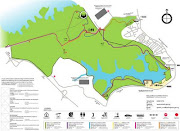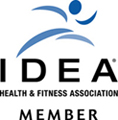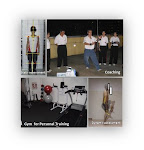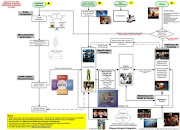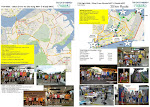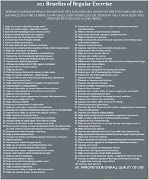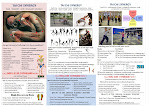MInd Training for TaiChi. Call +65 94312135 or email to tsenyu1@singnet.com.sg
TAI CHI SYNERGY SERVICES
The rack can be purchased and is specifically designed to achieve mobility (Refer to http://taichihealthfitness.blogspot.com/ for the full descriptions and purchases).
■ It allows you to stretch the anterior muscles of the chest and shoulders that are deemed short and often inflexible due to poor posture.
■ It mobilises the thoracic spine, increasing your ability to extend and rotate through this important area.
■ Mobilising the thoracic region helps increase the available movement in the shoulder and pelvic region, allowing us to move more freely and efficiently.
■ Serves as treatment equipment and later as fitness equipment during the maintenance phasse. Enhance quality of life over life cycle
Many good results and testimontials have been received from Sedentary adults, Yoga, Pilates and Tai Chi practioners / instructors, cyclists, runners, swimmers, golfers, tennis players, badminton players, dancers, scoliosis clients, clients with low back pain / hand numbness / nerves impingement etc.
Provides You With Physical Activity Tips and Recommendations.
Sunday, December 12, 2010
"Burn As You Walk" versus Tai Chi Walk
Sunday, November 28, 2010
Sunday, October 24, 2010
Menopause Stiffness - Benefits of Exercise
Many times, women will blame age for the stiffening of the joints but the truth is that often it is associated with hormonal change in the body. Of course, age is a factor but not necessarily the culprit. Interestingly, if you notice morning or anytime stiffness, you should be checked out by your doctor to rule out other possibilities. For example, being overweight could cause stiffness and joint pain. Having an inflamed digestive tract could also be a problem in that dysbiosis in the digestive system leads to systemic inflammation, thus the stiffness and pain. Cortisol and insulin could also be the problem since they are both inflammatory agents. Having an imbalanced eicosanoid, which are hormone-like biochemicals can cause stiffness.
As you can see, what many women claim to be simply menopause stiffness could in fact be something very different, something to be concerned with. Therefore, rather than ignore the stiffness, be sure to see a doctor. However, if you are experiencing menopause stiffness, this is likely caused from the change or fluctuation of estrogen and progesterone in the body. In this case, the stiffness just makes life a little more challenging but keep in mind you can do a number of things to find relief.
For menopause stiffness, you can change your diet, eating lean meats, more fresh fruits, and vegetables, sticking with whole grains, and avoiding excessive sugar, alcohol, and processed foods. Incorporating exercise into your daily routine is also beneficial. Although you might have menopause stiffness, you need to be moving to loosen up the muscles and joints through exercise. For some women, a type of hormone replacement therapy can help with the menopause stiffness but this should be a last resort, as HRT also brings about unwanted side effects and risks.
Of all these things for menopause stiffness, the most beneficial is exercise. Using exercises such as joint flexibility through warm-up and stretches, Tai Chi, Yoga, deep abdominal breathing, and tension release, you can help get the body become limber. With exercise, not only are you relieving menopause stiffness but you can actually prevent a number of other symptoms associated with menopause to include hot flashes, night sweats, urinary tract infection, insomnia, depression, osteoporosis, and so on.
The bottom line is that age is hastened by physical inactivity. When a person does not exercise, he or she is shortening life. However, by walking just at least 30 minutes (after warm-up and stretching) a day, you can greatly strengthen the lungs, bones, skin, digestive tract, nervous system, and more. Exercise is an excellent method for helping alleviate menopause stiffness so you can hop out of bed, as you once did. Best of all, you do not have to become a gym bum, spending every waking hour using high-tech equipment, although you could if you wanted. However, just walking alone will do incredible things for your body. In addition to helping the inside of the body, you will begin to drop weight and tone muscle, looking great on the outside too. The result of that is a healthier psyche, feeling more comfortable and confident.
Remember that in addition to things like menopause stiffness, women going through post menopause are 50% more likely to develop diabetes if not exercising! Then when you consider that weight gain is common among menopause women, exercise becomes even more attractive. Studies show that women who get regular exercise are 31% less likely to develop diabetes than women who do not exercise at all. As a menopausal woman, you owe it to yourself to take care of your body during these challenging years. The menopause stiffness, hot flashes, insomnia, night sweats, and depression do not have to rule your life.
If you notice menopause stiffness, start the morning with some deep abdominal breathing. For this, lie flat on your back, keeping your knees pulled up, and feet slightly apart. Through your nose, inhale deeply and slowly, allowing your stomach to relax. As you breathe in, imagine you are taking in energy. Then, slowly exhale through your mouth, this time imagining that you are pushing the air out from the top of your lungs down. By doing this about 10 times before you get out of bed, you are promoting deep relaxation, stress control, and more energy.
To give your joints more flexibility to help with menopause stiffness, you can work various parts of the body. For this, start by sitting on the floor with your legs stretched out in front of you. Place your hands on either side of your toes, flexing the toes up and down 10 times, Move to the ankles and rotate them in both direction, 10 times each while keeping your heels on the floor. For the knees, bend the left leg, bringing your heel toward your buttock. Lift the leg off the floor, straightening the knee 10 times. When done, do the other knee.
Now for the hips, bend your right leg, placing your food on your left thigh. Hold your right knee with your right hand and the right ankle with the left hand. Slowly and gently, move the knee up and down with the right hand, repeating with the other leg. You can even get rid of menopause stiffness in your fingers by lifting your arms to shoulder height and while keeping the arms straight, open the hands wide. Now, flex the fingers open and closed, 10 times. Menopause stiffness does not have to take control of your life but you have to step up to make changes.
Benefits of physical activity
Whether you've exercised faithfully for years or you haven't been physically active, physical activity during and after menopause offers many benefits. For example, regular physical activity can:
■ Prevent weight gain. Women tend to lose muscle mass and gain abdominal fat during and after menopause. Even slight increases in physical activity can help prevent weight gain.
■ Reduce the risk of breast cancer. Physical activity during and after menopause that results in weight loss may offer protection from breast cancer.
■ Strengthen your bones. Physical activity can slow bone loss after menopause, which lowers the risk of fractures and osteoporosis.
■ Reduce the risk of other diseases. During and after menopause, the risk of various chronic conditions — including cardiovascular disease and type 2 diabetes — increases. Regular physical activity can counter these risks.
■ Boost your mood. Physical activity during and after menopause can improve your psychological health.
Physical activity goals
For most healthy women, the Department of Health and Human Services recommends:
■ At least two hours and 30 minutes of moderate-intensity aerobic activity or one hour and 15 minutes of vigorous-intensity aerobic activity a week — preferably spread throughout the week
■ Strength training exercises at least twice a week
Although frequent, high-intensity physical activity during and after menopause may yield the most health benefits, it's more important to choose a fitness program that you can maintain for the long term. For motivation, set realistic, achievable goals. Rather than vowing to exercise more, for example, commit to a daily 30-minute walk after dinner. Frequently update your goals. Partnering with a friend can make a difference, too.
References
1. Hagey AR, et al. Role of exercise and nutrition in menopause. Clinical Obstetrics and Gynecology. 2008;51:627.
2. Nelson DB, et al. Effect of physical activity on menopausal symptoms among urban women. Medicine & Science in Sports & Exercise. 2008;40:50.
3. Pines A, et al. Exercise in the menopause - an update. Climacteric. 2007;10:42.
4. Elavsky S, et al. Lack of perceived sleep improvement after 4-month structured exercise programs. Menopause: The Journal of the North American Menopause Society. 2007;14:545.
5. Elavsky S, et al. Physical activity and mental health outcomes during menopause: A randomized controlled trial. Annals of Behavioral Medicine. 2007;33:132.
6. Thurston RC, et al. Physical activity and risk of vasomotor symptoms in women with and without a history of depression: Results from the Harvard study of moods and cycles. Journal of the North American Menopause Society. 2006;13:553.
7. Thompson DL. Fitness focus copy-and-share: Menopause and exercise. ACSM's Health & Fitness Journal. 2006;10:4.
8. Bushman B. Exercise and menopause. ACSM Fit Society Page. Fall 2006:3. http://www.acsm.org/AM/Template.cfm?Section=Home_Page&TEMPLATE=/CM/ContentDisplay.cfm&CONTENTID=6128. Accessed Jan. 2, 2009.
9. North American Menopause Society. Achieving optimal health. Menopause Guidebook. 6th ed. Cleveland, Ohio: North American Menopause Society; 2006. http://www.menopause.org/Portals/0/Content/PDF/MG5.pdf. Accessed Jan. 2, 2009.
10. Obesity and cancer: Questions and answers. National Cancer Institute. http://www.cancer.gov/cancertopics/factsheet/risk/obesity. Accessed Dec. 23, 2008.
11. 2008 physical activity guidelines for Americans. U.S. Department of Health and Human Services. http://www.health.gov/paguidelines/pdf/paguide.pdf. Accessed Dec. 23, 2008.
12. http://www.menopauseatoz.com/menopause-stiffness.shtml
Saturday, October 23, 2010
Stiffness in Muscles
To improve your flexibility, long term, try incorporating short 1 to 2 minute stretches throughout your workout. So if you're in the gym, spend the time between sets doing a few stretches.
Then at the end of the session, spend 5 to 10 minutes doing some deeper, more intense static and PNF stretching. This should be part of your cool-down.
Cold stretching is bad. you should be warmed up properly before stretching. Most of the long term benefits to your flexibility will come from the static and PNF stretching you do as part of our cool-down. You should see a big improvement within 1 to 2 months, which will probably make you more flexible than 80% of the people in the gym.
Saturday, September 4, 2010
Tai Chi Diary from Ms Elise Nge - 太极拳的体会
Taiji is a skills that start you a lifetime
Taiji rejuvenite oneselves
Taiji permits oneselves to be optimistic
Taiji is a "command of language" that tells you evry stroke counts with perfection
Taiji command our respect (礼) to others
Taiji makes good friends (四海皆兄弟)
Taiji is an art that cultivate you into a wholesome person
Taiji puts you into world of inner peace (心靜)
Taiji melts you into a world of relaxation (体松)
Taiji nakes you a strong person
Taiji helps cultivate a good character
Taiji always make you happy
Taiji makes you proud
Taiji always keep you young at heart
Taiji is your best companion
Taiji will keep you busy
Taiji is continious learning
Taiji will not make you feel bore
Taiji is full of fund
Taiji train ourselves to be patience
Sunday, August 8, 2010
Sunday, July 11, 2010
Saturday, July 10, 2010
Friday, May 28, 2010
Taichi for Health (增健太极拳) at Potong Pasir CC
Monday, May 24, 2010
Wednesday, May 19, 2010
Monday, May 3, 2010
八段锦 (Ba Duan Jing)
【基本内容和方法】
(一)“两手托天理三焦”法
直立,两足分开,与肩同宽。两臂自然松垂身侧,然后徐徐自左右侧方上举至头顶,两手手指相叉,翻掌,掌心朝上如托天状,同时顺势踮两脚跟,再将两臂放下复原,同时两脚跟轻轻着地。如此反复多遍。若配合呼吸,则上托时深吸气,复原时深呼气。
(二)“左右开弓似射雕”法
直立,左足跨出一大步,身体下蹲作骑马式。两臂在胸前交叉,右臂在外,左臂在内,眼看左手,然后左手握拳,食指翘起向上,拇指伸直与食指成八字撑开。接着左臂向左推出并伸直,头随而左转,眼看左手食指,同时右手握拳,展臂向右平拉作拉弓状。动作复原后左右互换,反复进行数次。如配合呼吸,则展臂及拉弓时吸气,复原时呼气。
(三)“调理脾胃须单举”法
直立,两足分开,与肩同宽。右手翻掌上举,五指并紧,掌心向上,指尖向右,同时左手下按,掌心向下,指尖向前。动作复原后,两手交替反复进行,反复多遍,如配合呼吸,则上举下按时吸气,复原时呼气。
(四)“五劳七伤向后瞧”法
直立,两足分开,与肩同宽。两手掌心紧贴腿旁,然后头慢慢左顾右盼向后观望。如配合呼吸,则向后望时吸气,复原时呼气。
(五)摇头摆尾去心火
两足分开,相距约三个足底的长度,屈膝半蹲成骑马势。两手张开,虎口向内,扶住大腿前部。头部及上体前俯,然后作圆环形转摇,转动数圈后再反方向转摇。在转腰的同时,适当摆动臀部。如配合呼吸,则在转腰时吸气,复原时呼气。
(六)“两手攀足固肾腰”法
直立,并足,两膝挺伸、上身前俯,以两手攀握两足趾(如碰不到,不必勉强),头略昂起。然后恢复直立姿势,同时两手握拳,并抵于腰椎两侧,上身缓缓后仰,再恢复直立姿势。反复进行。本式采用自然呼吸。
(七)“攒拳怒目增气力”法
两腿分开屈膝成骑马势,两手握拳放在腰旁,拳心向上。右拳向前方缓缓击出,右臂伸直,拳心向下,两眼睁大,向前虎视。然后收回左拳,如法击出右拳,左右交替进行。如配合呼吸,则击拳时呼气,收拳时吸气。
(八)“背后七颠百病消”法
直立,并足,两掌紧贴腿侧,两膝伸直,足跟并拢提起,离地数寸,同时昂首,作全身提举势。然后足跟轻轻着地复原。反复进行。如配合呼吸,则足跟提起时吸气,足跟着地时呼气。
【自我保健应用】
“两手托天理三焦”法可吐故纳新,调理脏腑功能,消除疲劳,滑利关节(尤其是对上肢和腰背)。“左右开弓似射雕”法通过扩胸伸臂可以增强胸肋部和肩臂部肌力,加强呼吸和血液循环,有助于进一步纠正姿势不正确所造成的病态。
“调理脾胃须单举”法有助于防治胃肠病。
“五劳七伤向后瞧”法可消除疲劳,健脑安神,调整脏腑功能,防治颈肩酸痛。
“两手攀足固肾腰”法可增强腰部及下腹部的力量,但高血压病和动脉硬化患者,头部不宜垂得太低。
“攒拳怒目增气力”法可激发经气,加强血运,增强肌力。
“背后七颠百病消”法可疏通背部经脉,调整脏腑功能。长期坚持练习八段锦可增强体质,防止疾病。
75% of seniors (50 years old and above) in Singapore Screened "at risk"
Wednesday, April 28, 2010
Singapore Keep-Fit Taijiquan (18 Steps)
SKT consists of 18 easy-to-learn movements, depicting grace and calmness. The routine satisfies all technical requirmeents of the 13 Movements Taijiquan and ocuses on enhancing various body functions so as to achieve a healthier state of mind and well-being. SKT is also an ideal relaxation exercise for maintaining a balanced lifestyle.
"Singapore Keep-Fit Taiji - suitable for everyone, regardless of gender, age and race."
Monday, April 19, 2010
Friday, April 9, 2010
Tai Chi For Health Event - 15 May 2010 (Join Us)
A Wellness Event For Everyone!
This FREE event provides the opportunity for people of all ages to enjoy a group introductory experience of our latest Taichi for Health courses offered at Community Clubs (CCs) and Residents’ Committee Centres (RCs). The event is led by Dr Paul Lam, a physician from Australia and world leader in Taichi for Health.
DATE Saturday, 15 May 2010
TIME 7:30am - 11:00am
VENUE
People’s Association Headquarters (PAHQ)
9 King George’s Ave Singapore 208581 (Exit Lavender MRT station, just opposite Jalan Besar Stadium)
Event Schedule
----------------
7.30am Registration
7.40am Taichi Warm-up Exercise
8.00am Taichi Rhythmball Demonstration
8:05am Taichi Rhythmball Workout
8.15am Taichi for Health - Mass Workout
9:00am - 11:00am Booths on Healthy Cooking, Food Sampling, Free Giveaways, Free Osteoporosis Risk Assessment, Personal Taichi DEmos by PA Trainers
9.30am - 10:15am Talk by Dr Paul Lam on Taichi for Health (English)
10.15am - 11:00am Talk by Dr Paul Lam on Taichi for Health (Mandarin)
(Talks in auditorium)
Do join us and bring along your groups, families, friends and colleagues to participate the event to be held on Saturday, 15 May 2010 from 7.30am to 11.00am at the PAHQ.
Friday, March 26, 2010
42式太极拳歌诀
第一段
1.起势
混沌初开法为先, 气贴背走沉丹田,
心静体松精神注, 平腕坠肘势自然。
2.右揽雀尾
初运鸿濛阴阳现, 起落开合太极圈,
掤捋挤按为总手, 雀尾动作技法全。
3.左单鞭
单鞭多用可防攻, 左像箭来右似弓,
体正松腰勾屈下, 翻掌前推转腰行。
4.提手
胸部被击用提手, 截合断封妙无穷,
上提虚步相一致, 身势含蓄合手肘。
5.白鹤亮翅
白鹤亮翅立鸡群, 左采右掤两臂分,
沉气落胯腰拔起, 开中寓合须用心。
6.搂膝拗步(二)
起肩过胯膝外搂, 拗步推掌沉腕肘,
搂推弓步相一致, 头领身正左右走。
7.撇身捶
横截压带闪正中, 翻拳按掌劲宜整,
手眼身步要协调, 双臂翻转随腰动。
8.捋挤势(二)
捋势变挤圆又连, 手随腰动劲不断,
劲从根起形于梢, 节节贯串一气连。
9.进步搬拦捶
太极五捶此为先, 搬拳之后立掌拦,
拦掌过后捶急进, 上下相随劲不断。
10.如风似闭
臂下穿手十字封, 后坐分掌闭于胸,
两臂推按腹前下, 跟步助劲显奇功。
第二段
11.开合手
两手开合于胸前, 开吸合呼法自然,
沉肩坠肘掌相对, 意念存在两掌间。
12.右单鞭
右脚横开体微转, 两掌侧分一条鞭,
沉肩坠肘虎口对, 侧弓步子裆宜圆。
13.肘底捶
扣脚掩掌接抱球, 迈步跟脚连摆手,
捶居肘下前劈掌, 三尖相照合要求。
14.转身推掌(二)
撤步碾脚把体转, 搂按举掌转体间,
上脚跟步掌前推, 左右式子紧相连。
15.玉女穿梭(二)
捋后搭手于胸前, 跟步转体掌平摆,
弓步上架前推掌, 左右式子紧相连。
16.右左蹬脚
转体穿掌两臂展, 两掌交叉抱胸前,
分撑两掌勾脚蹬, 左右蹬腿紧相连。
17.掩手肱捶
两掌掩合于面前, 开步叠掌外分展,
外旋两臂合拳肘, 护腹弓步前打拳。
18.野马分鬃(二)
转身旋臂横挒掌, 翻掌托于膝上方,
上步弓腿前穿靠, 左右式子紧接上。
第三段
19.云手(三)
两手交替环形转, 势如行云圆连绵。
腰领手转目随视, 步子横行轻灵缓。
20.独立打虎
撤步翻掌向前穿, 双掌左摆握成拳,
提膝架拳打虎式, 身正稳立似如山。
21.右分脚
两掌叠抱于胸前,右上摆踢臂分展,
单腿支撑微弯屈, 劲力通顺达脚尖。
22.双峰贯耳
屈腿收掌于膝上, 落脚上步分两掌,
重心前移成弓步, 力贯双拳取太阳。
23.左分脚
转体叉掌抱胸前, 左上摆踢臂分展,
单腿支撑微弯屈, 劲力通顺达脚尖。
24.转身拍脚
扣步落脚随势转, 两掌交叉抱胸前,
右脚绷平向上踢, 右掌拍击右脚面。
25.进步栽捶
落脚转体右掌翻, 进步搂手要当先,
重心前移成弓步, 前下栽打出右拳。
26.斜飞势
后坐左转两掌分, 两臂叉抱右脚跟,
右脚上成侧弓步, 斜展双臂似鸟飞。
27.单鞭下势
重心偏移左腿弓, 左勾侧举下屈腕,
屈膝仆步成下势, 右掌顺腿向前穿。
28.金鸡独立(二)
左腿蹬直右腿弓, 落勾挑掌似斜行,
提膝上挑同侧掌, 左右式子皆相同。
29.退步穿掌
撤步弓腿后闪让, 右掌下按左穿掌,
横掌下按胸前护, 穿掌取喉人难防。
第四段
30.虚步压掌
左脚内扣体右转, 左掌上举右掌按,
提转落成右虚步, 横压按掌于膝前。
31.独立托掌
左腿独立右膝提, 身正直立似如松,
右掌翻转向上托, 左掌体侧横向撑。
32.马步靠
下落右脚体右转, 右捋摆掌劲不断,
左前上成半马步, 左臂挤靠向内旋。
33.转身大捋
后坐带掌向上翻, 绕上右脚体左转,
右掌侧托提左掌, 撤步平捋一周圈。
34.歇步擒打
重心右移体右转, 右肘上撑右拳穿,
回身盖步下屈蹲, 左拳背上打右拳。
35.穿掌下势
收脚提掌向右摆, 左脚侧出体右转,
右腿全蹲成仆步, 两掌顺腿向前穿。
36.上步七星
重心前移左腿弓, 左掌前挑与肩平,
右腿前上成虚步, 两拳叉架成七星 。
37.退步跨虎
撤步撑掌体右转, 收脚挎虎连又圆,
左腿前举立站稳, 右掌左勾一条鞭。
38.转身摆莲
扣脚转体掌平摆, 空掌平抹势不断,
左转身体右摆脚, 两掌依次拍脚面。
39.弯弓射虎
捋掌屈落右腿弓, 重心前移似挽弓,
右提左拂随转体, 炮架当头左拳冲。
40.左揽雀尾
收脚抱球体自然, 迈步分掌臂捧圆,
捋掌搭手前挤出, 后坐按推掌向前。
41.十字手
上体右移扣脚转, 两掌外分似挑担,
合抱胸前十字手, 收脚直立庭前站。
42.收势
翻掌前撑同肩宽, 徐徐下落腿外边,
左脚收至右脚旁, 收式并立身自然。
References
http://hi.baidu.com/sdytgb/blog/item/19d77b92b3388a86a877a444.html
Saturday, March 20, 2010
Wednesday, March 3, 2010
新加坡綜合健身太极拳

This set is developed by Singapore Wushu Dragon & Lion Dance Federation for Mass Display in April 2010. Below are the movement steps:
1. 起势 (武式)
2. 左搂膝拗步 (杨式)
3. 手揮琵琶 (杨式)
4. 進步搬拦捶 (孫式)
5. 如封似闭 (孫式)
6. 开合手 (孫式)
Thursday, February 18, 2010
Poem - Tai Chi

Sunday, February 7, 2010
Tai Chi Shows Promise for People With Arthritis

Thursday, January 7, 2010
Regulate Fitness Industry

Jan 7, 2010
THE Singapore Sports Council or the Health Promotion Board should look into setting up a regulatory body to ensure that the fitness industry shapes up and follows acceptable standards.
Rising medical costs and awareness of the importance of health and fitness have led to a boom in the fitness industry. But many engage poorly qualified trainers who are simply jumping on the band- wagon.
Many call themselves 'fitness consultants', 'fitness directors' and 'master trainers', but if you check their qualifications, you soon realise many of these certifications can be bought online or via correspondence.
Fitness training is more than just the same exercises day in and day out, pushing your clients to do more and then suggesting they drown themselves in protein shakes. Many of these so-called trainers just want to sell their expensive packages and care little about their clients' health. Ask them about nutrition or the latest training methodologies, and they are stumped.
Fitness training should be holistic, including fitness assessments, anaerobic and aerobic training, flexibility and nutrition. Trainers should be skilled, experienced and qualified.
We need experts who know how to conduct fitness training for those who suffer from high blood pressure, asthma and diabetes - not trainers with online certifications or trophies from a Mr Singapore modelling contest.
Regulatory bodies govern doctors, traditional Chinese medicine practitioners and physiotherapists. It is only logical to set up a regulatory body to beef up standards in the fitness industry which is in a sorry state. Don't wait until injuries occur under poorly qualified trainers.
References
1. ST Forum by Andrew Lee, http://www.straitstimes.com/STForum/Story/STIStory_474381.html
My Core Services (Call SE Tan at 9431-2135 OR email: tsenyu1@singnet.com.sg)


Client Testimonials
Joan, Tai Chi student from Yio Chu Kang CC
"Hi Maureen, Enyu,
Thank you for taking time to prepare and share your knowledge at our training clinic on Sunday. Nice to have you around to share on your expertise. I think I speak for all attendees to say that we all brought back muck insight to our walking techniques.
FYI and already confirmed, we will also load the pictures into LTAW's website "
Ng Yousi - Let's Take A Walk 2009 - Chairperson
Weizhen Chen - Let's Take A Walk 2009 Committee
"I learnt loads and enjoyed Sat's session!" Thank you very much Coach Tan :)" - Tapering Training
" The whole team (Maureen, GG, Coach Tan and Jon) worked well with each other strengths, which I truly respect. Based on the tentative resulta, EneRgyworkz team was accompanied by other teams with similar timings. More importantly, the distance was finished and not with terrible injuries"
Diane, Shariff, GiaYee - EneRgyWorkz Marathoners NorthFace100 2009
"I am doing the exercise prescriptions every daily and really I am feeling better. Thank you very much with you around, I will be well"
Ang KH, Polytechnic Lecturer - walking deficiencies, cannot squat, diabetes and high blood pressure (under medication)
" Wishing you a Happy Teacher's Day (1st Sep). Thank you for your patience in helping your student auntie to heal. I managed to knee at church on Sunday. I am so happy that my legs does not hurt already. I will always remember you as my World Best Teacher :-) Thank you. "
Elise Nge, Business Executive
"I have followed the training methods you taught me on stretching and postural techniques; and now when I do my Tai Chi, my knee pain has disappeared. Truly appreciate and thank you so much for teaching me the scientifc ways of practising Tai Chi"
Bay MK, Product Promoter
" Thank you for treatment to solve my heel pain problem(plantar facsiitis). It really hurt me alot before I met up with you. You have trained me on the correct posture and your coaching is easily understood. Thank you"
Kelvin Koh, Pharmaceutical Manager
" Your treatments using T-Rack and corrective exercise therapy prescriptions allow me to correct my conditions and my pain has reduced tremendously. I can now do my self treatment at home and thank you for spending your valuable time"
Zubai, Business woman (Client with scoliosis)
"Dear Therapists of Let's Take a Walk 2008
8 months of planning, 13 committee members, 33 hours of event, close to 100 volunteers, over 900 participants and more than $60,000 raised. These are some numbers from Let's Take A Walk 2008 successfully held over the last weekend.
Thank you. Thank you to all of you who have sacrifice your time to help us over the weekend. Your contribution and professionalism has contributed to the success of our event."
Chan Peng, On behalf of Organising Committee 2008
Click here to download the full Your Prescription for Health flier series, or choose a flier below
Exercise is Medicine
Information and recommendations for exercising safely with a variety of health conditions.
Exercising with Amyotrophic Lateral Sclerosis
Exercising with Anxiety and Depression
Exercising with Atrial Fibrillation
Exercising Following a Brain Injury
Exercising Following Cardiac Transplant
Exercising with Cerebral Palsy
Exercising with Chronic Heart Failure
Exercising with Chronic Obstructive Pulmonary Disease
Exercising with Chronic Restrictive Pulmonary Disease
Exercising Following Coronary Artery Bypass Graft Surgery
Exercising with Cystic Fibrosis
Exercising with End-Stage Metabolic Disease
Exercising Following a Heart Attack
Exercising with Hyperlipidemia
Exercising while Losing Weight
Exercising with Lower Back Pain
Exercising Following Lung or Heart-Lung Transplantation
Exercising with Mental Retardation
Exercising with Multiple Sclerosis
Exercising with Muscular Dystrophy
Exercising with a Pacemaker or Implantable Cardioverter Defibrillator
Exercising with Parkinson's Disease
Exercising with Peripheral Arterial Disease
Exercising with Polio or Post-Polio Syndrome
Exercising with Type 2 Diabetes
Exercising with Valvular Heart Disease
Why We Need to Retool "Use It Or Lose It": Healthy Brain Aging
Johns Hopkins Arthritis Center
TaiChi Routines and Circuit Training Depot (road near the rail track is now accessible)
View Taichi Depots and Training Routes in a larger map
This requires a proper exercise prescriptions (daily and weekly) for individuals and appropriate circuit design (including bad weather) using existing natural environment (depending on individual preferences, preferably mixture of indoor and outdoor) around us to keep us healthy and fit. Time must be well-spend.
For example: some of my clients are doing warming up and stretching at home, their Taichi aerobic activties are done using the outdoor circuit and cooling down with Taichi routines followed by stretching near thereby their house. The re-hydration with fuild is done at home during rest followed by his bath. They have multiple version of programs (changing the variables of the components and types) for variety.
If you are interested, call +65 94312135 or email to tsenyu1@singnet.com.sg
TaiChi Jogging For Neuromuscular Body Alignment (11km)
View TaiChi Jogging Route (11km) in a larger map
Bukit Timah Nature Reserve Trekking

Refer to dotted "Red" route. Email to tsenyu1@singnet.com.sg if you want to be informed and to participate of this event. It takes less than 2 hours for complete circuit. Timing varies and depending on the fitness and size of the group. Learning and understand proper human walking mechanics and the need of conditioning for Activities of Daily Living (ADL)
Hiking Route from Yew Tee to Bukit Timah Hill & MacRitchie Trails
Bukit Timah Nature Reserve
--------------------------------
http://web.singnet.com.sg/~tsenyu1/Bukit_Timah_Hiking_Route_(From_Yew_Tee).jpg
MacRitchie hiking trails
---------------------------
http://web.singnet.com.sg/~tsenyu1/MacRitchie_Hiking_Trails_(From_Bukit_Timah_Nature_Reserve).jpg
If you are interested, call +65 94312135 or email to tsenyu1@singnet.com.sg
21km Route (Half Marathon)
View 21km Route (Half Marathon) in a larger map
LTAW - 50km Power Walk
View LTAW 2009 50Km PowerWalk in a larger map
LTAW 50 - 100km Extreme Walk
View LTAW 2009 50-100Km ExtremeWalk in a larger map
.jpg)








.jpg)






